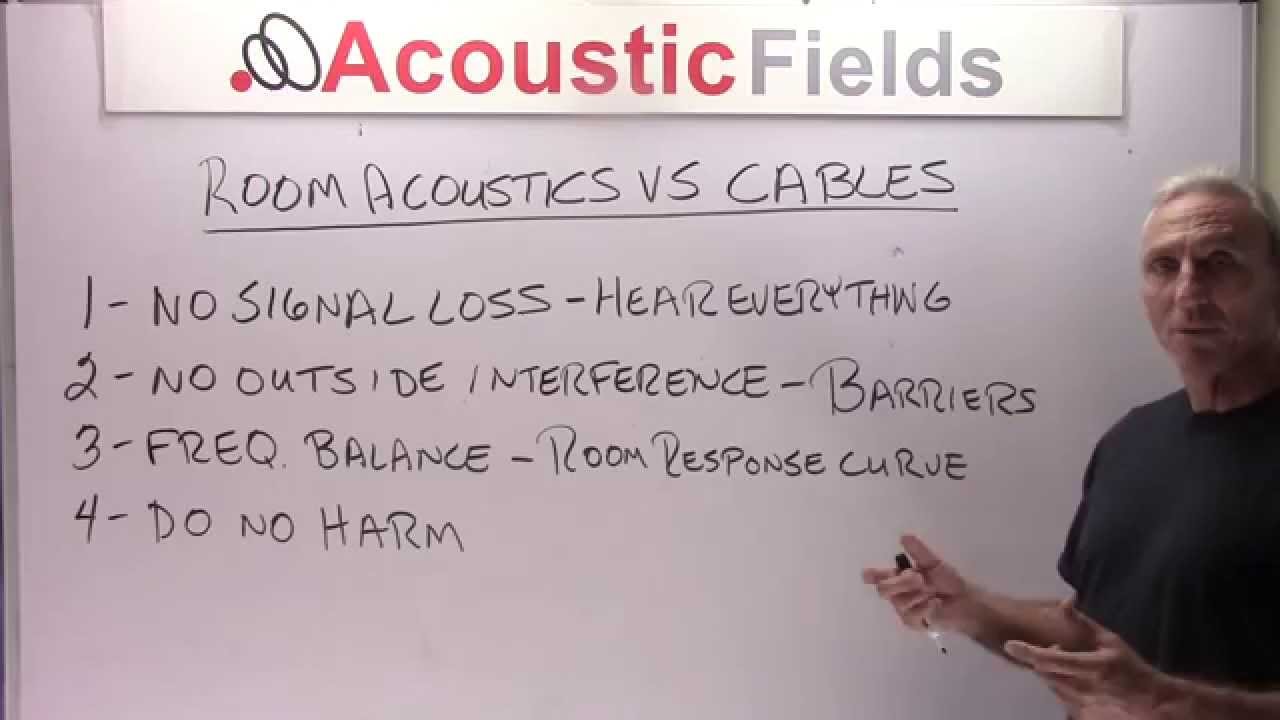The following is an unedited transcript from our video series from Acoustic Fields. There will be some errors in grammar and sentence structure that occur during this translation process.
For complete understanding and comprehension, please view the video which is included in this text. For any additional information regarding this topic or others relating to room acoustics, please contact us directly at:
P: 520 – 392 – 9486
dennis@acousticfields.com
______
Today we’re going to talk about room acoustics and cables. We’ve had the great pleasure if you will of building our new facility in Hollywood, California. We basically started from scratch. We got rid of all the old equipment that we had and were starting new. New speakers, new cables, new components, so it’s fun learning about some different things again. It’s been 15 years I think since we actually bought new gear for our studio.
So I started to think about the cables that we’ve been working with and how expensive they are as you all know and I don’t know why that is but – and then secondly, how did the cables and room acoustics really compare? Are there any similarities? And I kind of came across – it jumped out at me and speaker and cable manufacturers are always concerned with signal loss, obviously we want no signal loss in our power, in our data transmission. So we want to make sure that we’re not loosing anything in the process.
So same thing in the room. We want to hear everything, we want to manage the lows, the middles and the highs. So in that regard about no signal loss, hearing everything, both rooms and cables are kind of alike in a lot of ways. No outside interference. Cable manufacturers go to great lengths for interference of all kinds, interference of energy in the air, vibrational problems, equipment issues. So they want to make sure that it’s shielded correctly that the currents are moving correctly and it’s not picking up any extraneous information it doesn’t need.
Same thing in a room. We build barriers, we want to make sure that there’s no noise getting into the room or the energy within the room does not get out, it’s not leaked out into the room, so no outside interference is common both for rooms and cables.
Frequency balance. Very very critical with cables. I think this is the hardest part for cable manufacturers to get right. They all use different methods, some even create their own metals that the energy goes through. They go through a lot of painstaking efforts to make sure that that there is a correct tone and frequency balance.
Obviously in our room we do the same thing. We’re after a balanced response curve. We’re going to need low-frequency absorption, middle and high-frequency absorption, middle and high-frequency diffusion. These are our insulation if you will. These are our connectors so to speak in the room side of it to get that frequency balance. This is what we’re after also in room acoustics.
And fourth, do no harm. I see a lot of people do things in their rooms that make the room worse. So cables are not supposed to make anything worse. You might not hear what you want to hear with a certain cable. It might not work well with your particular system, the [inaudible 03:13] especially, the resistance within the system. But the goal is to do no harm. You don’t want to make things worse. And we try to practice that in the room acoustics salon.
Thank you,
Dennis Foley







